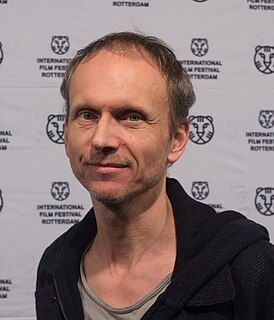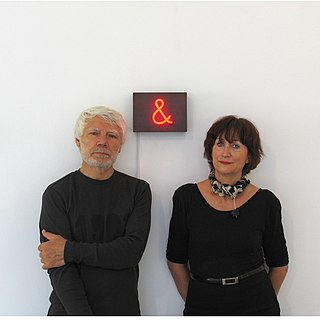
Chemistry is the scientific study of the properties and behavior of matter. It is a natural science that covers the elements that make up matter to the compounds composed of atoms, molecules and ions: their composition, structure, properties, behavior and the changes they undergo during a reaction with other substances.

Bochum, with a population of 364,920 (2016), is the sixth largest city of the most populous German federal state of North Rhine-Westphalia and the 16th largest city of Germany. On the Ruhr Heights (Ruhrhöhen) hill chain, between the rivers Ruhr to the south and Emscher to the north, it is the second largest city of Westphalia after Dortmund, and the fourth largest city of the Ruhr after Dortmund, Essen and Duisburg. It lies at the centre of the Ruhr, Germany's largest urban area, in the Rhine-Ruhr Metropolitan Region, and belongs to the region of Arnsberg. Bochum is the sixth largest and one of the southernmost cities in the Low German dialect area. There are nine institutions of higher education in the city, most notably the Ruhr University Bochum, one of the ten largest universities in Germany, and the Bochum University of Applied Sciences.

The Ruhr University Bochum is a public research university located in the southern hills of the central Ruhr area, Bochum, Germany. It was founded in 1962 as the first new public university in Germany after World War II. Instruction began in 1965.

Manfred Eigen was a German biophysical chemist who won the 1967 Nobel Prize in Chemistry for work on measuring fast chemical reactions.

Rita Süssmuth is a German politician of the Christian Democratic Union (CDU). She served as the 10th President of the Bundestag.
Werner Kutzelnigg was a prominent Austrian-born theoretical chemist and professor in the Chemistry Faculty, Ruhr-Universität Bochum, Germany. Kutzelnigg was born in Vienna. His most significant contributions were in the following fields: relativistic quantum chemistry, coupled cluster methods, theoretical calculation of NMR chemical shifts, explicitly correlated wavefunctions. He was a member of the International Academy of Quantum Molecular Science.
Environmental art is a range of artistic practices encompassing both historical approaches to nature in art and more recent ecological and politically motivated types of works. Environmental art has evolved away from formal concerns, for example monumental earthworks using earth as a sculptural material, towards a deeper relationship to systems, processes and phenomena in relationship to social concerns. Integrated social and ecological approaches developed as an ethical, restorative stance emerged in the 1990s. Over the past ten years environmental art has become a focal point of exhibitions around the world as the social and cultural aspects of climate change come to the forefront.
The Gottfried Wilhelm Leibniz Prize, in short Leibniz Prize, is awarded by the German Research Foundation to "exceptional scientists and academics for their outstanding achievements in the field of research". Since 1986, up to ten prizes are awarded annually to individuals or research groups working at a research institution in Germany or at a German research institution abroad. It is considered the most important research award in Germany.

TU Dortmund University is a technical university in Dortmund, North Rhine-Westphalia, Germany with over 35,000 students, and over 6,000 staff including 300 professors, offering around 80 Bachelor's and master's degree programs. It is situated in the Ruhr area, the fourth largest urban area in Europe. The university is highly ranked in terms of its research performance in the areas of physics, electrical engineering, chemistry and economics. The university pioneered the Internet in Germany, and contributed to machine learning.

Reinhard Saftig is a German retired football player and manager.

Gerhard Ertl is a German physicist and a Professor emeritus at the Department of Physical Chemistry, Fritz-Haber-Institut der Max-Planck-Gesellschaft in Berlin, Germany. Ertl's research laid the foundation of modern surface chemistry, which has helped explain how fuel cells produce energy without pollution, how catalytic converters clean up car exhausts and even why iron rusts, the Royal Swedish Academy of Sciences said.

Julian Rosefeldt is a German artist and filmmaker. Rosefeldt's work consists primarily of elaborate, visually opulent film and video installations, often shown as panoramic multi-channel projections. His installations range in style from documentary to theatrical narrative.

Dortmund University station is an underground S-Bahn station on the line between Dortmund and Bochum in the German state of North Rhine-Westphalia. The station was opened on 24 September 1983 by Deutsche Bundesbahn on a new line built between Bochum-Langendreer and Dortmund-Dorstfeld. Like other stations on this line, it is served only by passenger trains.
Fritz Schupp was a German architect. He was educated from 1914 to 1917 at the Universities of Karlsruhe, München and Stuttgart. Despite mostly working alone, he formed a partnership based in Essen and Berlin with Martin Kremmer. From 1949, Schupp was a lecturer at the Technical University in Hannover. Between 1920 and 1974, he built 69 factories and plants. In the Bergbauarchiv (Bochum), 17500 sketches are at the disposal of researchers. His best-known work was the Zollverein Coal Mine Industrial Complex, a UNESCO World Heritage Site since 2001.

Rebecca Kamen is an American artist. Kamen's artwork is influenced and inspired by scientific work in many areas, from medieval alchemical manuscripts to the periodic table, to theories of black holes. Informed by science, her works attempt to illuminate its hidden beauty.

Josef H. Neumann is a German Art Photographer, media designer and art historian. He invented the chemogram, an experimental artform involving manipulating chemicals in film photography.

Joachim Schmettau is a German sculptor.

Molitor & Kuzmin are a collaborative duo of visual artists, who are classified as light art and installation artists.
The 2018–19 Bundesliga was the 56th season of the Bundesliga, Germany's premier football competition. It began on 24 August 2018 and concluded on 18 May 2019. It also marked the first season without Hamburger SV, previously the only team to have played in the top tier of German football in every season since the end of World War I.

Sandra Mann is a German artist and photographer. In her cross-genre work, she deals conceptually with the relationship between people, with nature, the environment, the animal world and gender issues. Her work is characterized by research into the fundamentals of photography and visual language. In 2021, she was awarded the Goethe plaque from the city of Frankfurt am Main.















